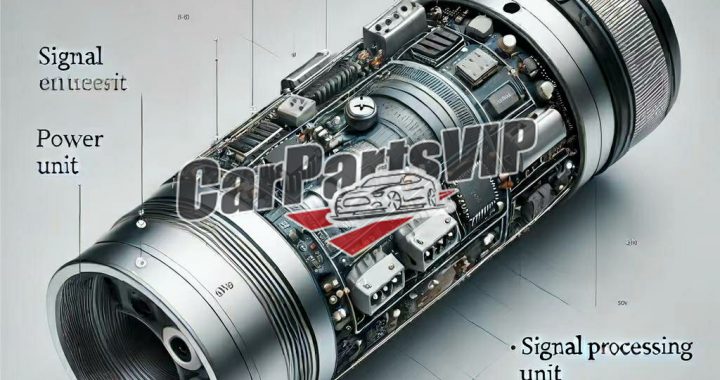Below is the knock sensor, which is located outside the engine body, between the outer walls of the second and third cylinders. Its function is to detect the intensity of the combustion and explosion of the engine cylinders, so as to effectively suppress the occurrence of engine deflagration, which is often called cylinder explosion. What is cylinder explosion? The combustible mixture accumulated in the cylinder explodes and burns irregularly in advance, causing the pressure and temperature of the gas in the cylinder to suddenly increase several times, causing a sharp knocking sound, which will cause the engine to overheat and reduce power, and in severe cases, damage and deformation of the machine parts. This is cylinder explosion. After the electronic control unit recognizes the detonation data, if it exceeds the safety range, it will adjust the advance angle and ignition timing to suppress the occurrence of detonation.
The next one is the coolant temperature sensor, which is located near the coolant outlet on the engine cover. It is responsible for detecting the temperature of the coolant. When the coolant temperature is too low, it will affect the performance of the engine. After the electronic control unit recognizes it, it will adjust the idle speed and ignition timing as well as the concentration of the fuel to optimize combustion and help achieve the optimal operating temperature. If the water temperature is too high, the radiator of the coolant system will be opened to help the engine dissipate heat. At the same time, the coolant temperature will also be displayed on the dashboard.
The oxygen content sensor is located in the exhaust manifold of the exhaust system. It is divided into front oxygen and rear oxygen. In engines that use a three-way catalytic converter to reduce exhaust pollution, the oxygen sensor is an indispensable component. The function of the front oxygen is to detect the oxygen concentration in the exhaust system exhaust gas and send a feedback signal to the ECU, which then controls the increase and decrease of the injector nozzle, thereby controlling the air-fuel ratio of the mixer near the theoretical value. In addition, the function of the rear oxygen sensor is to detect the working condition of the unit catalyst and feed back to the ECU to ensure that the exhaust emissions meet the standards.
The speed sensor is used to detect the actual speed of the car. The electronic control unit can adjust the fuel injection amount according to the vehicle speed to ensure that the engine is in a high-speed working range. At the same time, the vehicle speed information will also be displayed on the dashboard.
The oil pressure sensor is located at the upper end of the oil filter. Its function is to detect the oil pressure value. When the pressure value is normal, the lubrication system can work normally. When the pressure value is normal, an alarm signal will be issued and the oil light on the dashboard will be lit.
These sensors must cooperate with each other and work closely together to complete the engine’s power conversion work. As long as one of them fails, it will affect the normal operation of the engine. Therefore, the sensor is the basis for the normal operation of the engine and is also a strong guarantee for the on-board computer ECU to control the overall situation.

